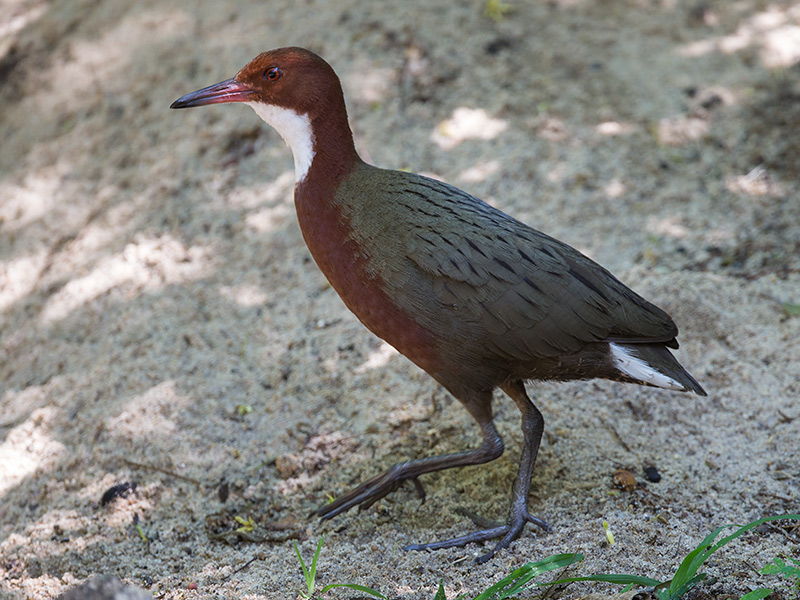
Dryolimnas cuvieri
SUBFAMILY
Rallinae
TAXONOMY
Rallus cuvieri Pucheran, 1845, Mauritius. Two subspecies recognized.
OTHER COMMON NAMES
French: Rвle de Cuvier; German: Cuvierralle; Spanish: Rascуn
de Cuvier.
PHYSICAL CHARACTERISTICS
12–13 in (30–33 cm); 5–8 oz (138–223 g) (aldabranus), 9–9.7 oz
(258–276 g) (cuvieri). Orangy- to reddish brown foreparts,
prominent white chin and throat, greenish olive upperparts,
barred flanks and white lateral undertail-coverts. Juvenile duller
and browner.
DISTRIBUTION
D. c. cuvieri: Madagascar; D. c. aldabranus Aldabra Atoll.
HABITAT
Forest, marsh, and mangroves (cuvieri); coral scrub (aldabranus).
BEHAVIOR
Permanently territorial. Often confiding. Vocal, with grunts,
clicks, squeals, and a song of loud whistles; often calls at night.
The Aldabra race is flightless.
FEEDING ECOLOGY AND DIET
Eats mainly invertebrates; also turtle eggs and hatchlings, and
scraps at campsites (Aldabra).
REPRODUCTIVE BIOLOGY
Monogamous; pair bond permanent. Breeds during rains in
Madagascar (October through March); on Aldabra lays in Dec.
Nest a bowl of leaves and grass on the ground, or a few twigs
and leaves among rocks. Eggs three to six (usually three to
four); young independent at 12–15 weeks.
CONSERVATION STATUS
Not threatened. Nominate race common. In 2001 3,500–8,000
aldabranus individuals occurred naturally on three islands.
Reintroduced to Picard Island in 1999, where it breeds and has
a predicted population of 2,500 birds. Its survival depends on
preventing the spread of feral cats and the introduction of populations
to other islands to safeguard against extinction by catastrophic
events.
SIGNIFICANCE TO HUMANS
None known.
Other popular Animals
Photo Gallery of - White-throated rail




 Animalia Life
Animalia Life